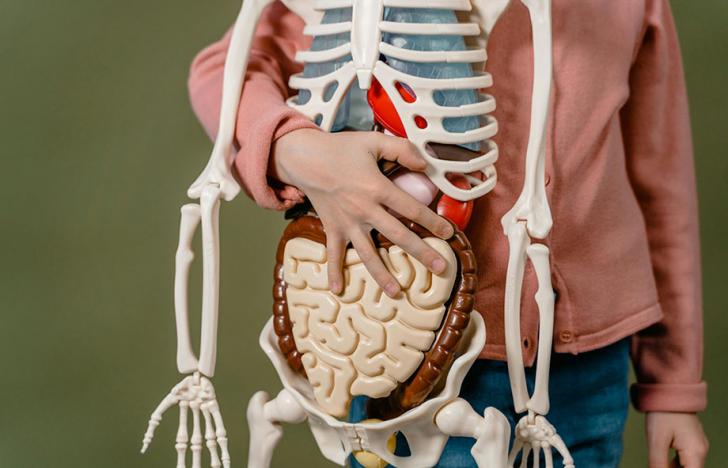The increasing need for donor tissue or organs is becoming an increasing challenge. German innovation agency Spring launched its funding program pipeline last November, and is now presenting the first results.
(red/chuck) More and more patients are relying on donor tissue or organs. However, increased demand is still a long way off. Patients experience long waiting lists and multiple medical challenges — or die before a donation is available. Synthetic tissue can mean a permanent improvement in quality of life.
Over the past few decades, scientists, engineers, and doctors have developed tools to build biosimilars that mimic natural tissue. However, the ultimate goal of overcoming the limitations of conventional organ transplantation has not yet been achieved. Extensive research on this matter is also being conducted at the Medical University in Innsbruck (as reported by Al-Eqtisadiah newspaper).
Development of cells, tissue engineering and technical materials
German innovation agency Spring launched its own multi-stage funding program on these topics last November. The focus is on an advanced concept that creates the most advanced synthetic tissue to date. This tissue must be as close as possible to natural human tissue in terms of size, structure and complexity and can include elements such as cell development, tissue structure development or technical materials, which is summed up in what is called tissue engineering.
The aim of the first phase, which will last for eight months, is to demonstrate the properties of the artificial tissue. Sprind supports this with up to €500,000. In the second and final phase, which lasts for two months, each team will have up to an additional 100,000 euros at its disposal. Here the focus is already on planning the so-called first human trial. As usual with other innovation projects, the teams are supported by Sprind and networked with other experts.
Participants in the “Tissue Engineering” project.
In the first phase of the 10-month innovation competition, four teams are now being funded to demonstrate the feasibility of a new tissue engineering approach in the first human transplant. The following teams create organ replacements for the liver, pancreas, muscles and joint cartilage.
“Tissues must be as close to the natural model as possible to enable patients to have as high a quality of life as an organ transplant. This requires innovations in cell engineering, the development of tissue constructs or technical materials,” explains Janno Costard, challenge leader at SPRIND.
Celebrex Company
The Cellbricks team has set itself the goal of replacing lost or disturbed liver function, because without a functioning liver, the body's metabolism breaks down. The Cellbricks team, in collaboration with their clinical partners at Charité Berlin (hospital note), wants to reconstruct human liver tissue on a large scale.
The goal is to use 3D bioprinting to produce complex liver tissues from bioinks with extracellular matrix and human liver cells. These tissue therapies are bioengineered in the laboratory and eventually implanted into the patient's body. The goal is a longer, healthier life.
ZonalCartHT – Bi-Zone Cartilage Grafts
Missing or damaged cartilage causes tremendous pain and often renders our joints useless. The ZonalCartHT team led by Solveig Diederichs (Heidelberg Orthopedic University Hospital) and Uwe Freudenberg (Leibniz Institute for Polymer Research Dresden) is developing a new cartilage substitute aimed at restoring joint functions.
A combination of biohybrid hydrogels and stem cells is used to develop a complex, two-layer matrix intended to reverse the natural transition between bone and cartilage. At the same time, the materials used must allow sustained function and flexibility in order to restore joint function and prevent recurrent joint replacement. The University of Medicine in Innsbruck is working on a similar project (according to what Al-Eqtisadiah newspaper reported).
Muscle engineering for human organ transplantation
Despite its resilience, injuries and illnesses can push muscle tissue's ability to regenerate to its limits. In order to better treat muscle injuries and diseases, the team of Bruno Cadot (Mycology Institute, Paris), Francisco Fernandez (Sorbonne University, Paris) and Léa Trichet (Sorbonne University, Paris) wants to produce large, transplantable muscle units.
The so-called ice model used by the team enables the production of macroscopic and complex tissue structures of collagen and fibrin. They should then be filled with different types of cells from muscle tissue in order to obtain functional and muscle units that will replace the damaged tissue.
Bioprinted functional pancreatic tissue
Although insulin offers an effective treatment for many people with type 1 diabetes, there is still no possibility of a cure because the body's tissues for producing insulin are missing. Ricardo Levato (Utrecht University Medical Center) and his team want to take a decisive step towards recovery.
Using light-induced bioprinting, they simultaneously incorporate stem cells, bioactive molecules and extracellular matrix into functional tissue modules. The resulting tissue resembles the endocrine pancreas gland and can also produce insulin. Further operation must also protect new tissue from destruction by the immune system in order to solve the underlying problem of type 1 diabetes.

“Total coffee aficionado. Travel buff. Music ninja. Bacon nerd. Beeraholic.”







More Stories
Blurred vision could be inflammation
Mysterious methane on Mars: NASA has a new theory
NASA: Hubble enters safety mode again